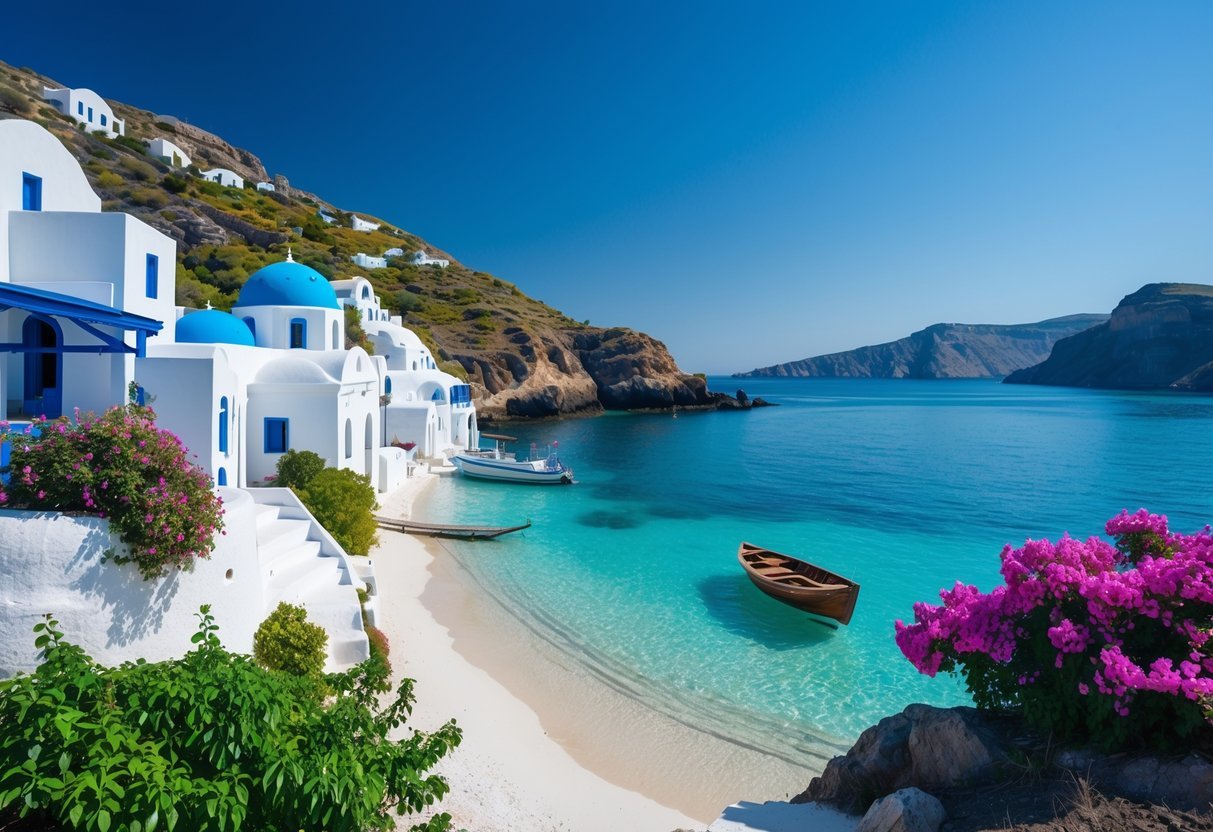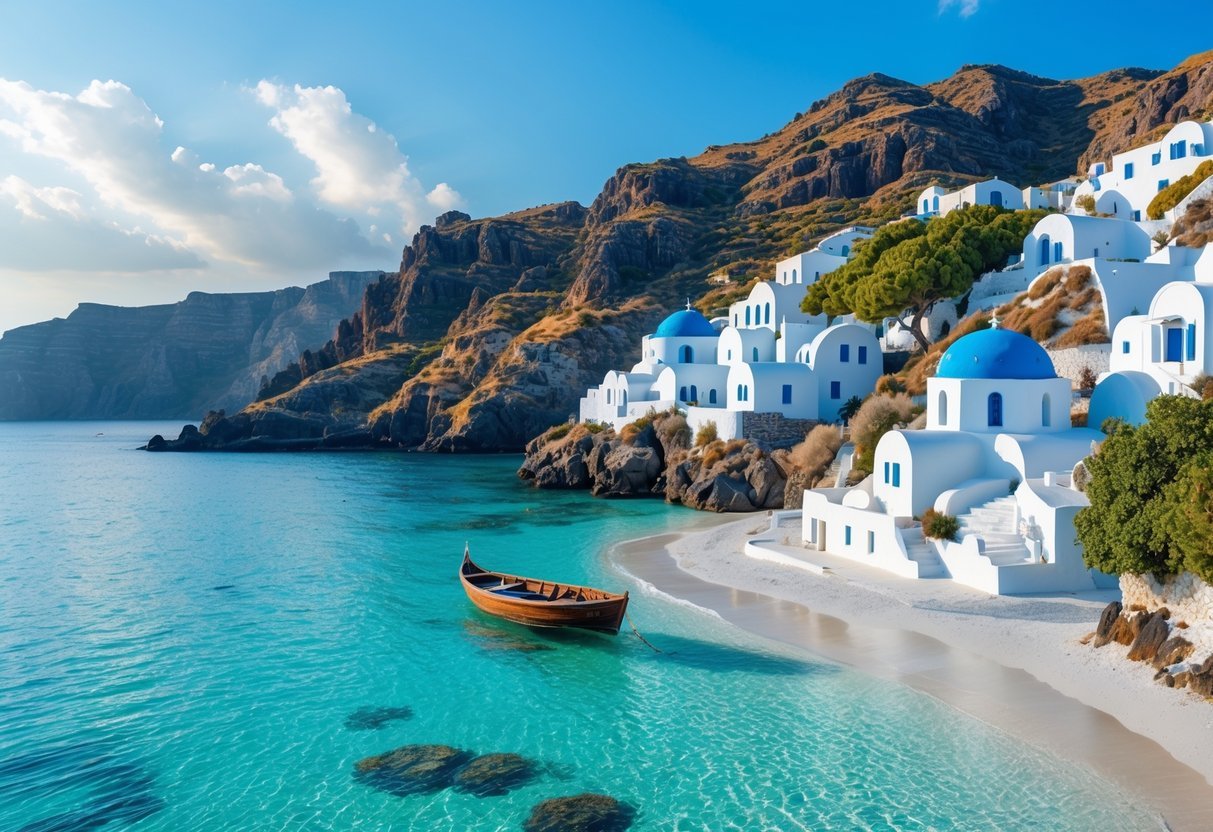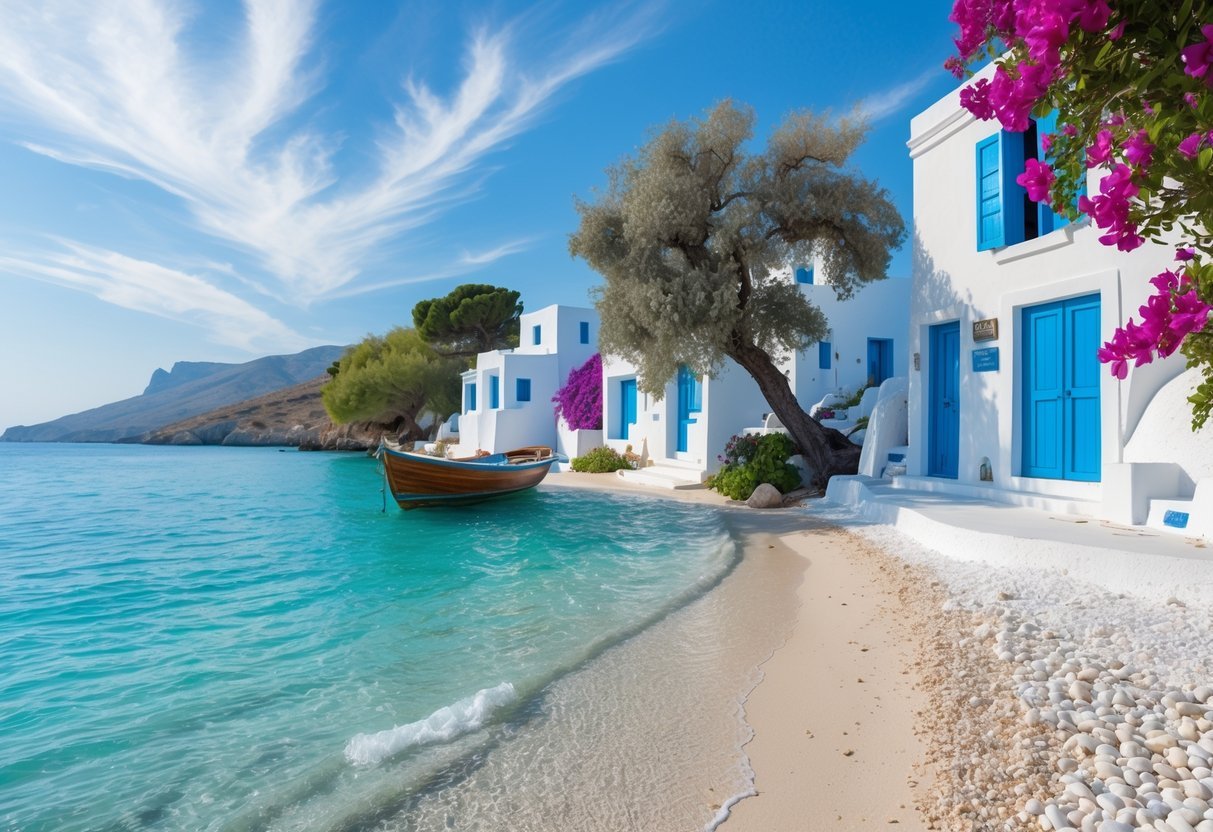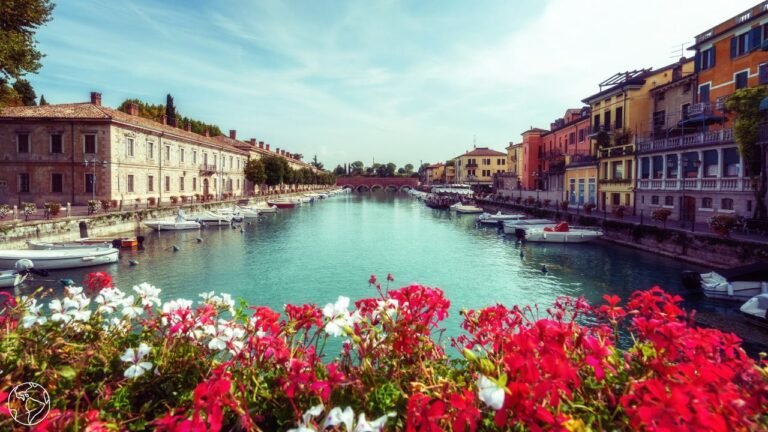If you think Santorini is the only beautiful island in Greece, you’re missing out on a whole world of hidden gems. There are plenty of lesser-known islands with stunning landscapes, charming villages, and peaceful beaches—minus the crowds and sky-high prices.

These hidden Greek islands are often cheaper than Santorini while giving you just as much, if not more, natural beauty and authentic local experiences. You can find whitewashed walls, amazing volcanic views, and quiet beaches without breaking your budget or dealing with busy tourists.
Exploring places like Milos or Folegandros lets you soak up Greece’s magic in a more relaxed and affordable way. Let’s get into which islands deserve a spot on your list for a beautiful, wallet-friendly trip.
Best Hidden Greek Islands Cheaper and Prettier Than Santorini
There are Greek islands out there that offer jaw-dropping views, fewer crowds, and lower prices than Santorini. These places blend natural beauty with a real taste of local life.
You’ll find quiet beaches, traditional villages, and fresh seafood—far from the typical tourist hotspots. Sounds pretty tempting, right?
Koufonisia: Tranquil Aegean Escape
Koufonisia is a tiny group of islands in the Aegean Sea. If you’re after peace and quiet, this is your spot.
The island has crystal-clear waters and sandy beaches that somehow stay uncrowded. The main town is a sweet little fishing village with whitewashed houses, and you’ll find small boutique hotels that are genuinely welcoming.
Seafood here is as fresh as it gets—caught right off the coast. There’s barely any traffic, so you can wander its trails by foot or bike and really slow down for once.
Naxos: Authentic Cyclades Charm

Naxos is the biggest Cyclades island and has a mix of mountain villages and long, sandy beaches. It’s got that authentic Greek vibe, but with way fewer tourists than Santorini.
Visit mountain villages with stone houses and old churches, and you’ll feel the peaceful atmosphere. Naxos is also known for its fertile land—local cheeses and fresh produce are everywhere.
Along the coast, you’ll find quiet bays and family-run seafood tavernas serving up homemade dishes. If you want a bit of culture and a lot of beach time, Naxos is a win.
Milos: Dramatic Volcanic Beauty
Milos stands out for its wild volcanic landscapes. There are colorful rock formations, hot springs, and a bunch of hidden sea caves to explore.
The old fishing villages have narrow streets and a laid-back vibe. It’s never too crowded, so you can stumble on quiet corners where it feels like you’ve got the island to yourself.
Stay in a boutique hotel by the water and you’ll get a taste of real Greek hospitality. The seafood is top-notch, and every beach has its own quirky personality, thanks to all that volcanic activity.
Tinos: Wild Landscapes and Village Life
Tinos is way less touristy and has a rugged, untamed feel. The island is full of wild landscapes—think high mountains and green valleys.
You can wander through traditional villages that still hold onto old crafts and religious sites. Tinos feels rural and real, without the fancy hotels or crowds you get on Santorini.
If you love food, you’ll find fresh seafood and local dishes in cozy, family-owned tavernas. The locals are friendly, and the pace is slow—perfect for soaking up the island’s quiet charm.
Travel Tips and Unique Experiences on Lesser-Known Islands
On these quieter Greek islands, you can dig into history, relax on stunning beaches, and eat food that actually tastes like Greece. Each island brings something different—maybe it’s ancient ruins, maybe it’s a cove where you’re the only one swimming.
Knowing a few practical details will help you travel smoother and really get into the local culture. Trust me, it’s worth the effort.
Exploring Local Culture and History

Many hidden Greek islands have deep histories that are just as fascinating as the big-name spots. For instance, on Andros, you’ll run into ancient marble statues and old settlements.
Ithaca is famous for its Homeric legends and quiet villages that still keep traditions alive. The Dodecanese islands—like Karpathos and Rhodes—are packed with ruins and castles from different eras.
Visiting small museums or monasteries (like those perched on rocks in Meteora) can really pull you into the island’s past. Walking through old towns and chatting with locals? That’s where you see daily Greek life up close—customs, festivals, crafts, all that good stuff.
Where to Find Scenic Beaches and Authentic Cuisine
If you’re after peaceful, gorgeous beaches, the smaller islands deliver. Myrtos Beach in Kefalonia is stunning and not nearly as crowded as Santorini’s shores.
Skiathos and Paros have quiet coves with clear water and soft sand. When you’re hungry, you’ll find real Mediterranean food, made with local ingredients.
Try grilled fish, Greek salad, and homemade cheese. Hunt down family-run tavernas in villages like Naoussa in Paros or by the coast in Corfu and Kos.
Most islands have weekly markets selling fresh olives, herbs, and honey. Eating here supports local farmers, and honestly, it tastes way better than the touristy stuff you’ll get on the big-name islands.
So, if you’re dreaming of Greece but dreading the crowds (and prices) of Santorini, give these hidden islands a shot. You’ll get the beauty, the food, and the real Greek experience—without the chaos. Who knows, you might even find a new favorite spot.
Practical Information for Visiting Hidden Greek Islands
Traveling to lesser-known islands often means you’ll run into limited public transport. There are usually fewer places to stay, too. Karpathos and Ithaca typically require ferry rides from bigger hubs like Rhodes or Kefalonia.
If you’re going during peak season, booking ferries ahead of time is a smart move. No one likes scrambling for last-minute tickets.
Lodging ranges from small hotels to guesthouses. Prices here are generally easier on the wallet compared to somewhere like Crete or Mykonos.
Renting a scooter or car? Highly recommended if you want to check out those remote beaches and tucked-away villages. It’s just more fun that way.
Wi-Fi and cell service can be a bit spotty on the smaller islands, so don’t count on streaming your favorite shows every night. Many local places shut down for a few hours in the afternoon—it’s worth keeping in mind when planning your day.
Definitely pack comfortable shoes for wandering those old, uneven streets. Sunscreen is a must, unless you’re aiming for a lobster-red souvenir photo.
Honestly, visiting the hidden Greek islands takes a bit more effort, but that’s part of the charm. If you like a slower pace and a few surprises, you’ll probably love it.




